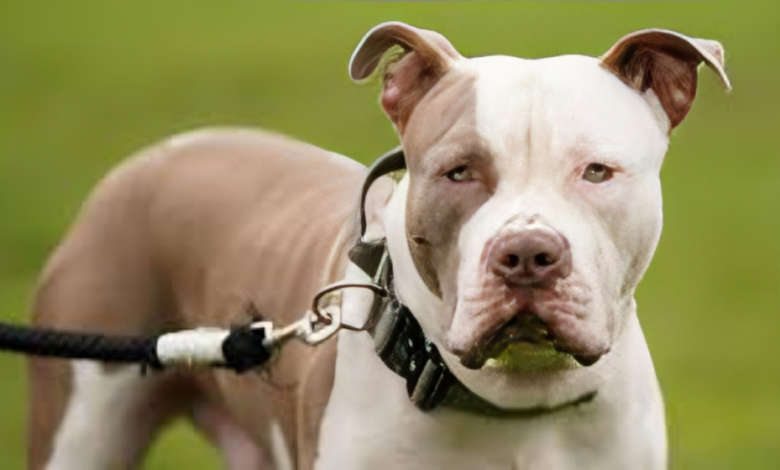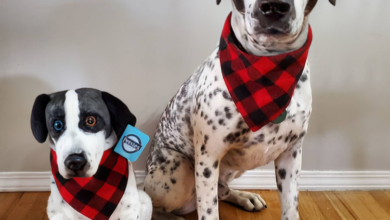XL Bully Dog Everything You Need to Know About This Popular Breed

The XL Bully dog has gained significant popularity in recent years due to its impressive size, muscular build, and loyal nature. This breed is often misunderstood, but with the right knowledge and training, it makes an excellent companion and family pet. If you’re considering getting an XL Bully, this article will provide you with all the essential information, from its history and temperament to training and health care.
History and Origin of the XL Bully Dog
The XL Bully dog is a relatively new breed that originated from the American Bully, a breed that was first developed in the United States in the 1990s. The American Bully itself was bred from the American Pit Bull Terrier and the American Staffordshire Terrier to create a more muscular yet gentle and friendly breed.
The XL Bully is the largest variation of the American Bully breed, recognized by various kennel clubs, including the United Kennel Club (UKC). Breeders selectively bred XL Bullies for their size, strength, and temperament, making them distinct from other bully breeds.
Appearance and Physical Characteristics
The XL Bully dog is known for its powerful and athletic build. Here are some key physical characteristics of the breed:
- Size: Males can weigh between 80-150 pounds and stand 20-23 inches tall, while females weigh 70-120 pounds and stand 19-22 inches tall.
- Muscular Build: The breed has a broad chest, thick neck, and well-defined muscles, giving it an intimidating yet elegant appearance.
- Coat Type: The XL Bully has a short, XL Bully Dog coat that comes in various colors, including black, blue, fawn, brindle, and merle.
- Head Shape: The breed has a large, blocky head with a strong jawline, adding to its imposing look.
Temperament XL Bully Dog Personality Traits
Despite its muscular and fierce appearance, the XL Bully Dog is known for its affectionate and friendly nature. It is a highly loyal breed that thrives on companionship and human interaction. Here are some key personality traits of the XL Bully:
- Loyal and Protective: XL Bullies are incredibly loyal to their owners and can be protective, making them excellent guard dogs.
- Gentle and Affectionate: Unlike aggressive breeds, the XL Bully is known for being gentle, especially with children and other pets.
- Intelligent and Trainable: The breed is intelligent and eager to please, making training relatively easy with the right approach.
- Social and Friendly: They are social dogs that enjoy being around people and other animals when properly socialized from an early age.
Training and Socialization
Training an XL Bully Dog requires consistency, patience, and positive reinforcement. Due to their strength and size, early training and socialization are essential. Here are some tips for training your XL Bully:
- Start Early: Begin training and socialization at a young age to prevent aggressive tendencies and ensure good behavior.
- Use Positive Reinforcement: Reward-based training, including treats and praise, works best for this breed.
- Set Clear Rules: Establish firm rules and boundaries to prevent dominance-related issues.
- Socialize Properly: Expose your XL Bully Dog to different environments, people, and animals to build confidence and reduce fear-based aggression.
- Provide Mental Stimulation: Engage your dog with puzzle toys and training exercises to keep its mind sharp.
Exercise and XL Bully Dog Requirements
The XL Bully Dog is an active breed that requires regular exercise to stay healthy and happy. Here’s what you need to know about their activity needs:
- Daily Walks: At least 60-90 minutes of walking per day is essential to keep them fit.
- Playtime: Engage them in activities like fetch, tug-of-war, and obstacle courses.
- Strength Training: Given their muscular build, strength training activities such as pulling exercises and agility training can be beneficial.
- Mental Stimulation: Training sessions and interactive toys help prevent boredom and destructive behavior.
Health and Common Issues
Like all breeds, the XL Bully is prone to certain health conditions. Some common health issues include:
- Hip Dysplasia: A common joint problem that can lead to arthritis and mobility issues.
- Skin Allergies: Due to their short coat, XL Bullies can develop skin allergies from food, environmental factors, or parasites.
- Bloat (Gastric Torsion): A serious condition where the stomach XL Bully Dog with gas and twists, requiring immediate medical attention.
- Heart Issues: Some XL Bullies may be prone to congenital heart diseases, making regular check-ups essential.
- Obesity: Overfeeding and lack of exercise can lead to obesity, increasing the risk of various health problems.
Grooming and Maintenance
XL Bully Dog have low-maintenance grooming needs due to their short coats. However, regular care is still required to keep them clean and healthy.
- Brushing: Brush their coat once or twice a week to remove loose hair and keep their skin healthy.
- Bathing: Bathe your XL Bully once a month or as needed to prevent dirt buildup and skin infections.
- Ear Cleaning: Check their ears weekly and clean them to prevent infections.
- Dental Care: Brush their teeth regularly and provide dental chews to maintain oral hygiene.
- Nail Trimming: Trim their nails every few weeks to prevent overgrowth and discomfort.
Diet and Nutrition
A well-balanced diet is crucial for the overall health of an XL Bully Dog. Here are some dietary considerations:
- High-Quality Protein: Ensure their diet includes lean meats, fish, and high-quality kibble with a high protein content.
- Healthy Fats: Omega-3 and Omega-6 fatty acids support coat health and overall well-being.
- Carbohydrates: Provide complex carbohydrates like brown rice and sweet potatoes for sustained energy.
- Portion Control: Avoid overfeeding to prevent obesity and related health issues.
- Fresh Water: Keep fresh water available at all times to XL Bully Dog dehydration.
XL Bully Dog Considerations and Breed Restrictions
Before getting an XL Bully Dog, it’s important to check local laws and regulations, as some areas have breed-specific legislation (BSL) restricting or banning bully breeds. Some homeowners’ associations and rental properties may also have breed restrictions, so it’s essential to verify before adopting an XL Bully.
Is an XL Bully Dog Right for You?
Owning an XL Bully requires commitment, responsibility, and proper training. Here are a few questions to consider before getting one:
- Do you have enough space for a large dog?
- Are you willing to invest time in training and socialization?
- Can you provide regular exercise and mental stimulation?
- Are you financially prepared for potential health care costs?
- Do you understand the breed’s needs and temperament?
If you answered yes to these questions, the XL Bully could be a great addition to your family!
Conclusion
The XL Bully Dog is a remarkable breed known for its strength, loyalty, and affectionate nature. With the right training, socialization, and care, they make wonderful companions for individuals and families alike. If you’re considering adding an XL Bully to your home, be sure to research thoroughly and prepare for a rewarding experience with this loving and powerful breed.
